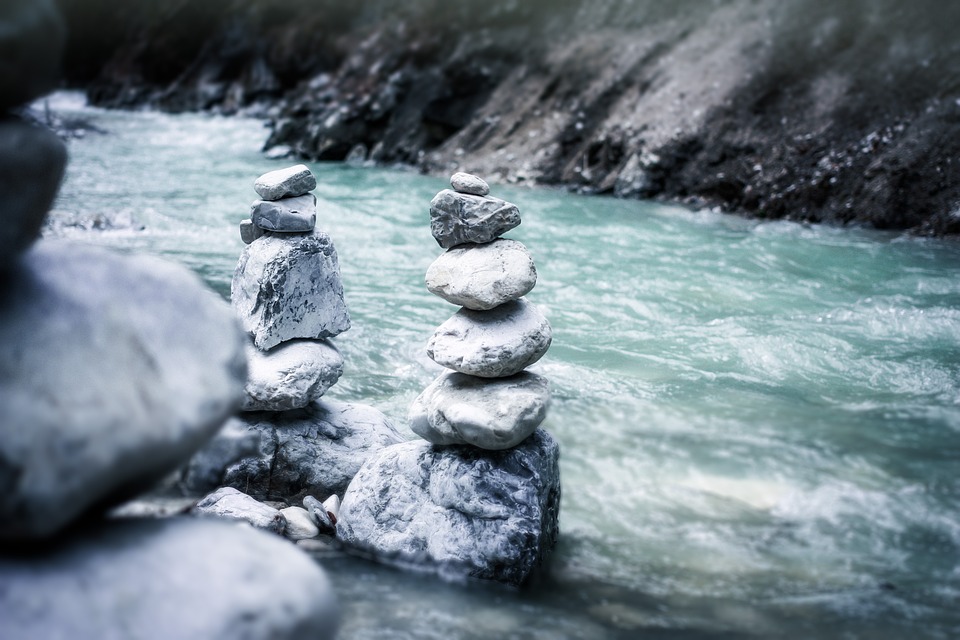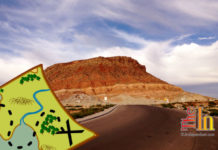 Male and female rivers are the natural boundaries to Bears Ears National Monument, not Trump’s
Male and female rivers are the natural boundaries to Bears Ears National Monument, not Trump’s
By Alastair Lee Bitsoi
The confluence of the Colorado and San Juan Rivers are the natural boundaries of the 1.35 million-acre Bears Ears National Monument, not the Trump boundaries of the Shash Jaa’ and Indian Creek Units, says Jonah Yellowman.
Yellowman made sure that the Bureau of Land Management and U.S. Forest Service acknowledge in federal record that these natural boundaries are what guided Utah Diné Bikéyah and the Bears Ears Inter-Tribal Coalition to advocate for the successful designation of the 1.35 million-acre Bears Ears National Monument.
“We oppose what they’re doing today when the monument was already established way before they took action by the Creator,” said Yellowman, a Utah Diné Bikéyah board member and spiritual advisor. “The confluence of the Colorado and San Juan Rivers — female and male rivers — is where offerings, rituals, and ceremonies were created and to ignore these natural boundaries is basically undoing the work of the Creator.”
Yellowman, who was among over 160 attendees at a Tuesday BLM/U.S. Forest Service scoping meeting in Bluff, added that the establishment of Bears Ears National Monument is similar to how most Christians and Mormons honor their churches and temples. And when it comes to the tribes and Native Americans, who advocated for Bears Ears National Monument, that same respect for religion or cultural lifeways is not being honored.
“They’re jumping the fence,” Yellowman said about how the BLM and the U.S. Forest Service are moving along with the public scoping process for the Shash Jaa’ and Indian Creek Units, which consists of only 15 percent of the entire 1.35 million-acre Bears Ears National Monument.
Along with Yellowman, many other Bears Ears supporters like Albert Page Tinhorn of Dennehotso, Arizona submitted comments that centered on how certain religions in America are seen as priority and preferred over indigenous knowledge and culture found at the monument.
“The discovery of the phytosaur fossil near Bears Ears National Monument shows how the area is a relic and connects us to the origin stories of the Navajo people,” Tinhorn said, adding that the creation narratives of the Hopi, Navajo, Ute, Ute Mountain Ute, and Zuni tribes, which all have strong cultural ties to the monument region, are further proof of why the monument needs to be fully protected and restored it its original designation.
According to the BLM, these kinds of claims by Yellowman and Tinhorn could possibly be ignored by the federal agencies because their public statements allegedly do not fit into the spectrum of management planning for both the Shash Jaa’ and Indian Creek Units. Their statements will be noted in federal record but most likely not reflected in the management planning of the two units, said Abbie Jossie, the BLM’s deputy state director.
Mark Maryboy, a Utah Diné Bikéyah board member who also submitted written comments, said that this public scoping process is a waste of time.
“It’s a slap in the face, but regardless of that we are being very relentless about the scoping period,” Maryboy said. “We know that this process helps extractive industries with nonrenewable energy development, which has been harmful and dangerous to citizens of San Juan County, primarily Navajo and Ute tribal members.”
In spite of the BLM’s effort to ignore tribal voices, Maryboy still thinks that the courts will overturn Trump’s proclamation that shrank Bears Ears National Monument by 85 percent.
“This scoping process needs to be held off until ongoing litigation has taken it course,” he said. “It’s ridiculous to go through this process way before the outcome of the litigation.”
The public has until April 11 to submit public comments to the BLM and U.S. Forest Service. Because Bears Ears National Monument is a natural treasure for all Americans and is sacred ancestral lands to Native Americans, Utah Diné Bikéyah recommends the public to cite these points below in their public comments here:
—Tribal consultation and collaborative management with Native Americans should be central in any BLM and U.S. Forest Service decision making, including in the Indian Creek Unit.
—Tribal access to and prioritization of Native American cultural resources must be maintained, such as the collection of firewood and medicinal plants, access for ceremonial use, and the ongoing identification and protection of all tribal, cultural, burial, and historic sites.
—Key wildlife species and medicinal plants should be studied and conserved for generations to come.
—Agencies must ensure that the ancient structures and rock art are preserved to the greatest degree possible, including protection from looting, sound disturbances, development, and other intrusions.
—The spiritual significance of this region to tribes must be understood and managed accordingly.
—Significant effort must be made to incorporate traditional knowledge of the five tribes with ceremonial, cultural, and historic connections to Bears Ears into the Management Plan, and this relationship to the land should be understood and protected.
—Request that BLM and U.S. Forest Service extend its comment period an additional 60 days to allow the public more time to comment.
—Insist the BLM and U.S. Forest Service halt planning of these units until the litigation over the Trump proclamation of Bears Ears is resolved by the courts.
—In addition to government-to-government consultations, incorporate experts designated by the tribes in the planning process. These experts may include cultural monitors, tribal historians, tribal elders, and others knowledgeable about the cultural, religious, and environmental significance of the Bears Ears National Monument, including the Indian Creek and Shash Jaa’ units.
Articles related to “Male and female rivers are the natural boundaries to Bears Ears National Monument, not Trump’s”
DOI spills ink on why to shrink Bears Ears National Monument




Does it make any difference that the Bear’s Ears area was also historically significant to historic Mormon groups like the Hole In the Rock company. I see no mention of local, non-Indian residents. I’m all for collaboration, but would like all the parties to be at the table.
Beware of the person who invokes personal knowledge of the mind of god to settle a political/policy dispute.
Just a (language)question: what do you mean with “male and female” rivers? For example, in France they make that difference too, like “le Rhône” (male) and “la Seine” (female). But I do not know what the real meaning is of this distinction.
Is this something comparable?
Regards,
Frank